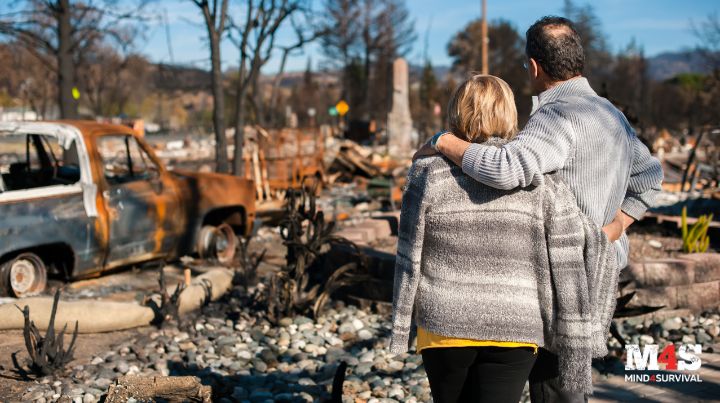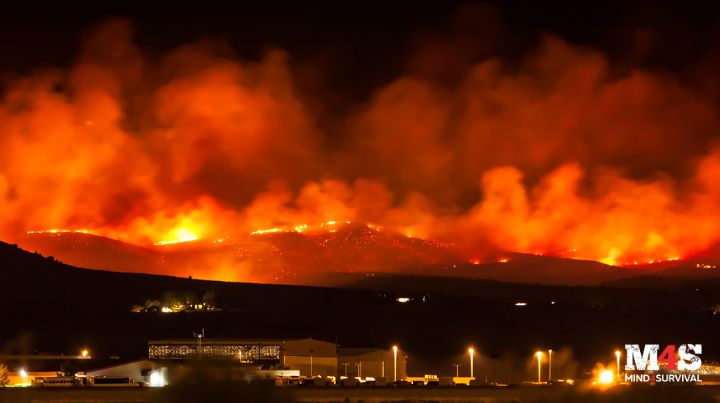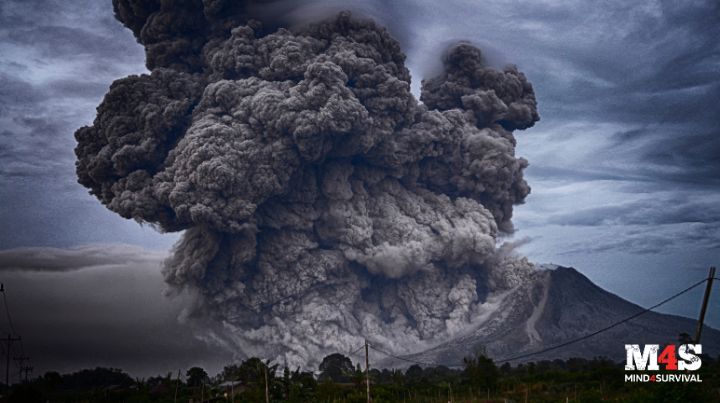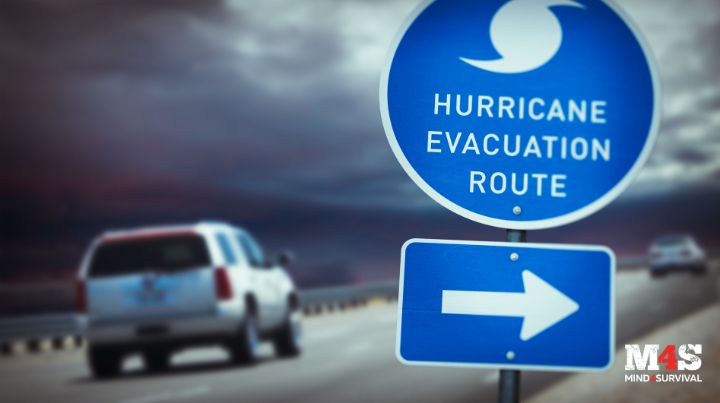Natural disasters strike without warning, leaving devastation in their wake. Preparing for such events can be the difference between life and death. Earthquakes, floods, hurricanes, and other disasters each present unique challenges. Understanding the threats specific to you and your family and taking proactive measures to prepare for them can enhance your safety and resilience. This article examines the specifics of preparing for various natural disasters, providing practical tips and actionable steps.
Quick Look at What You’ll Learn
Understanding Different Natural Disasters
Earthquakes
Earthquakes can unleash havoc in a blink, shaking the ground and toppling structures. Their sudden, violent movements can result in collapsed buildings, shattered windows, and widespread infrastructure damage. Preparing for such an event is essential to minimize risks and enhance your family’s safety. Here are critical steps to ready your home and family for an earthquake.
- Secure Your Home: Anchor heavy furniture to walls, secure water heaters, and fasten large electronics.
- Create a Safe Space: Identify safe spots in each room, such as under sturdy furniture or against an interior wall away from windows.
- Slip-on Shoes: Keep a pair of slip-on shoes next to your bed. That way, you can get up, slip on your shoes, and quickly exit the house while protecting yourself against broken glass and other debris.
- Alternative Shelter: Plan alternative shelter options should your home be uninhabitable.
- Gas Main: Gas lines can break and catch fire during an earthquake. Know how to turn off your gas main and have the proper wrench ready.
- Earthquake Kit: Due to the potential for a building collapse, it’s a good idea to store emergency supplies such as water, non-perishable food, flashlights, batteries, first aid supplies, a gas main wrench, etc.., away from your home.
Floods
Floods can strike with little warning, bringing heavy rainfall, overflowing rivers, or storm surges that lead to significant water damage and health hazards. Understanding the risk and taking proactive measures can significantly reduce the impact on your home and family. Here are key preparation steps to protect yourself from the dangers of flooding.
- Know Your Risk: Check local flood maps to determine if you live in a flood-prone area.
- Elevate Utilities: Raise electrical appliances and utilities above potential flood levels.
- Install Sump Pumps: Ensure your basement has a sump pump to deal with water accumulation.
- Flood Barriers: Use sandbags or other barriers to keep water away from your home.
Hurricanes
Hurricanes unleash fierce winds, torrential rain, and powerful storm surges, causing extensive destruction in their path. These dangerous storms can uproot trees, destroy homes, and flood entire communities within hours. Here are vital steps to help you get ready for the next hurricane.
- Board Up Windows: Use plywood or storm shutters to protect windows from flying debris.
- Reinforce Doors: Strengthen garage doors and other exterior doors to withstand high winds.
- Supplies: Stock up on essentials such as water, food, medications, and batteries.
Here’s a more in-depth article on How to Prepare for a Hurricane
Wildfires
Wildfires are a terrifying force of nature, capable of causing widespread destruction with little warning. Fueled by dry conditions and strong winds, these fires can spread rapidly, consuming everything in their path. Implementing fire safety measures and having a clear plan can significantly enhance your chances of staying safe.
- Create Defensible Space: Clear vegetation and debris at least 100′ (30 meters) from around your home.
- Fire-Resistant Plants: Any landscaping vegetation you allow in your defensible space should be comprised of fire-resistant plants.
- Fire-Resistant Materials: Use fire-resistant roofing and siding materials.
- Fire Extinguishers: Keep fire extinguishers in easily accessible locations.
Tornadoes
Tornadoes are among nature’s most violent storms, marked by a powerful rotating column of air extending from a thunderstorm to the ground. These windstorms can cause catastrophic damage in just a few minutes, obliterating buildings, uprooting trees, and overturning vehicles. Understanding how to prepare and respond swiftly can significantly reduce the risks and protect lives. Here are some suggestions to help you prepare for tornado threats.
- Safe Room: Identify or build a safe room or storm cellar in your home.
- Stay Informed: Monitor weather reports and tornado warnings.
- Emergency Kit: Keep an emergency kit with water, food, a flashlight, batteries, and a first aid kit in your safe room.
- Practice Drills: Regularly practice tornado drills with your family to ensure everyone knows what to do.
Read This Article on Tornado Preparedness
Tsunamis
Tsunamis are powerful and destructive ocean waves generated by underwater earthquakes or volcanic eruptions. These immense waves can travel across entire ocean basins, posing significant threats to coastal regions. The sudden and often unexpected nature of tsunamis makes it crucial for individuals in vulnerable areas to be well-prepared. To help you prepare for a tsunami, consider the following:
- Education: Learn about the natural signs of a tsunami, such as sudden sea level changes or an earthquake.
- Stay Informed: Sign up for tsunami alerts and listen to local authorities.
Here’s an article on How to Prepare for and Survive a Tsunami
Volcanic Eruptions
Volcanic eruptions are explosive acts of nature that can unleash ash, lava, and toxic gases, posing severe threats to human life, structures, and ecosystems. The aftermath of an eruption can lead to long-term environmental changes and health risks. Proper preparation can mitigate these dangers, ensuring safety and resilience in such a catastrophic event. Here are some critical steps to prepare for volcanic eruptions:
- Stay Informed: Keep track of volcanic activity in your area.
- Emergency Kit: Include masks and goggles in your emergency kit to protect against ash inhalation.
- Shelter Plan: Stay indoors with windows and doors closed to avoid exposure to ash.
Read this article for Tips on How to Prepare for a Volcanic Eruption
Power Outages
Power outages can strike unexpectedly, leaving you without electricity for hours or even days. These disruptions, caused by severe weather, equipment failures, or other issues, can turn daily conveniences into significant challenges. Preparing for a power outage is crucial to maintaining safety and comfort until power is restored. Here are vital steps to help you stay prepared and manage effectively during an outage:
- Backup Power: Consider a generator to keep essential appliances running.
- Alternative Light Sources: Have flashlights, batteries, and candles readily available.
- Food and Water: Stock up on non-perishable food and bottled water. Know how to keep food safe during an outage.
- Stay Warm: During cold weather, have extra blankets and warm clothing. In hot weather, find ways to stay cool without electricity.
Here are some Lessons Learned During a Power Outage
Blizzards
Blizzards bring heavy snowfall, strong winds, and freezing temperatures, creating hazardous conditions that can paralyze entire regions. These severe winter storms can lead to power outages, hinder emergency services, and isolate families for days. Here are vital steps to take when a blizzard is imminent:
- Stay Indoors: Avoid traveling during a blizzard. If you must go outside, dress in layers and cover exposed skin.
- Heating: Ensure your home is well-insulated and has alternative heating sources like a fireplace or portable heater.
- Emergency Supplies: Keep a stock of food, water, medications, and essential supplies in case you get snowed in.
- Vehicle Preparedness: If you need to travel, equip your vehicle with emergency supplies, such as blankets, food, water, and a shovel.
By understanding these natural disasters and their specific risks, you can better prepare yourself and your family for the potential challenges your area may experience. Each disaster type requires tailored preparation steps, ensuring you are ready to face the challenges they present.
General Preparations
Preparation is the cornerstone of disaster readiness. Establishing a comprehensive plan and assembling essential supplies can make all the difference when facing a crisis. This section outlines vital steps for building an emergency kit and developing a family plan to ensure you are equipped to handle a variety of disasters effectively.
Building a Comprehensive Emergency Kit
An emergency kit is essential for surviving the initial impact of a disaster and coping in the aftermath. Here’s what to include:
- Water: At least one gallon per person per day for seven days.
- Food: Non-perishable items such as canned goods, protein bars, and dried fruits.
- Medications: Stock prescription medications and a first aid kit.
- Tools and Supplies: Flashlight, batteries, multi-tool, duct tape, and sanitation supplies.
- Personal Documents: Keep copies of important documents such as identification, insurance policies, and medical records.
- Clothing and Bedding: Warm clothing, sturdy shoes, blankets, and sleeping bags.
- Communication Devices: Battery-powered or hand-crank radio and a fully charged power bank for your phone.
Developing a Family Emergency Plan
A family emergency plan ensures everyone knows what to do when disaster strikes. Here’s how to create one:
- Communication Plan: Establish how family members will communicate if separated. Designate an out-of-town contact who can relay information.
- Responsibilities: Assign specific duties to each family member, such as grabbing the emergency kit or securing pets.
- Evacuation Planning:
- Identify Safe Destinations: Determine where you will go in case of evacuation. This could include relatives’ homes, hotels, or community shelters. Ensure these destinations are in safe locations away from the disaster zone.
- Map Out Routes: Plan multiple evacuation routes from home to safe destinations. Be sure your routes avoid areas prone to flooding and congestion. Familiarize yourself with these routes and practice driving them under various conditions.
- Establish Meeting Points: Select at least two meeting points near your home and outside your neighborhood. These points will serve as rendezvous locations if family members get separated.
- Practice Drills: Regularly practice your emergency plan to ensure everyone is prepared and knows their role.
Vehicles
Be sure your vehicle is ready to go with fuel and supplies. It cannot only evacuate you from the danger zone but it can also be used as a temporary shelter if your home is damaged.
- Fuel: Keep your gas tank at least half full to avoid running out of fuel during an evacuation. I keep my tank 3/4 full. Store a gas can in your garage to give you extra fuel should you need it.
- Maintenance: Regularly service your vehicle to ensure it is in good working condition, including checking tires, brakes, and oil levels.
- Emergency Kit: Store an emergency kit in your car with water, non-perishable snacks, blankets, a flashlight, batteries, a first aid kit, and a multi-tool.
- Important Documents: Keep copies of essential documents like insurance papers, registration, and identification in a waterproof container in your vehicle.
- Navigation: Have physical maps of your area in case GPS systems fail.
- Communication: Include a car charger for your mobile phone and consider a portable battery pack.
- Shelter Supplies: Pack items you can use for temporary shelter, such as a tarp, tent, or sleeping bags.
- Tools: Carry basic tools, such as a jack, spare tire, jumper cables, and tire repair kit.
- Comfort Items: To make an extended stay in your vehicle more comfortable, include extra clothing, sturdy shoes, and personal hygiene items.
Special Considerations
When planning for natural disasters, it’s essential to account for specific needs that general preparedness guidelines often neglect to address. This includes considerations for pets, individuals with special needs, and maintaining psychological and financial well-being. Addressing these areas can help ensure a comprehensive approach to disaster readiness, safeguarding all aspects of your life.
Pets
Pets are family members, too, and their safety should be part of your preparedness plan:
- Pet Emergency Kit: Include food, water, medications, leashes, and identification tags.
- Shelter: Identify pet-friendly shelters or hotels in case of evacuation.
- Microchipping: Ensure that you microchip your pets and their information is current.
Special Needs
For individuals with special needs, additional preparations may be necessary:
- Medical Supplies: Ensure an adequate supply of medications and medical equipment.
- Assistance Devices: Have backups for essential devices such as wheelchairs or hearing aids.
- Care Plan: Develop a care plan that includes specific instructions for caregivers or emergency personnel.
Psychological Preparedness
Disasters can take a significant emotional toll. Being mentally prepared is just as important as having physical supplies:
- Stay Calm: Practice stress-management techniques to set an example of calm for those around you.
- Support Network: Maintain a strong support network of family and friends.
- Professional Help: Seek professional counseling if needed to cope with anxiety or trauma after the event.
Financial Preparedness
Being financially prepared can mitigate the impact of a disaster on your livelihood:
- Emergency Fund: Build an emergency fund to cover unexpected expenses.
- Insurance: Ensure you have adequate insurance coverage for your home, health, and belongings.
- Financial Documents: Keep critical financial documents in a safe, accessible place.
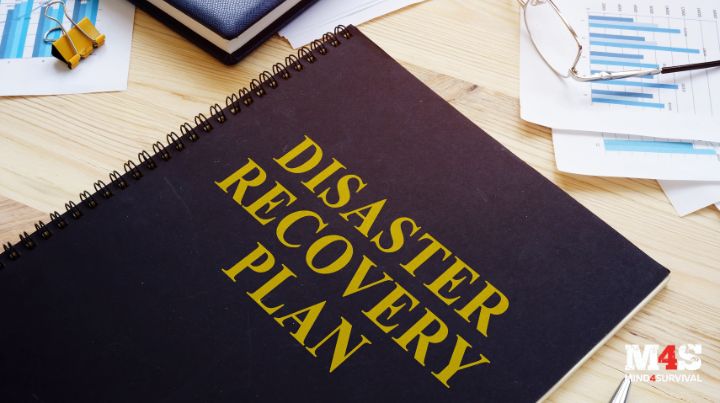
After the Disaster
Surviving the initial impact of a disaster is just the beginning. The path to recovery often presents new challenges and requires careful planning. Recovery after a disaster may be gradual, but taking proactive measures can help restore normalcy. Here are some steps to help with recovery:
- Safety First: If you decide to move about, be aware of hazards such as downed power lines, gas leaks, flooded areas, and debris.
- Assess Damage: Document damage to your property and belongings for insurance claims. Call the insurance company as soon as possible with any claims.
- Seek Assistance: Utilize resources such as local charities, government agencies, and community support.
The Bottom Line On Preparing for Natural Disasters
Preparing for natural disasters is not just about assembling supplies; it’s about cultivating a mindset of readiness and resilience. By understanding the threats posed by natural disasters, you can tailor your preparations to your specific situation and needs. This proactive approach to disaster readiness ensures you and your family are better equipped to face whatever comes your way.
What are your thoughts on disaster preparedness? Have you experienced a major natural disaster? Tell us in the comments below.
Stay safe,

Read the full article here



